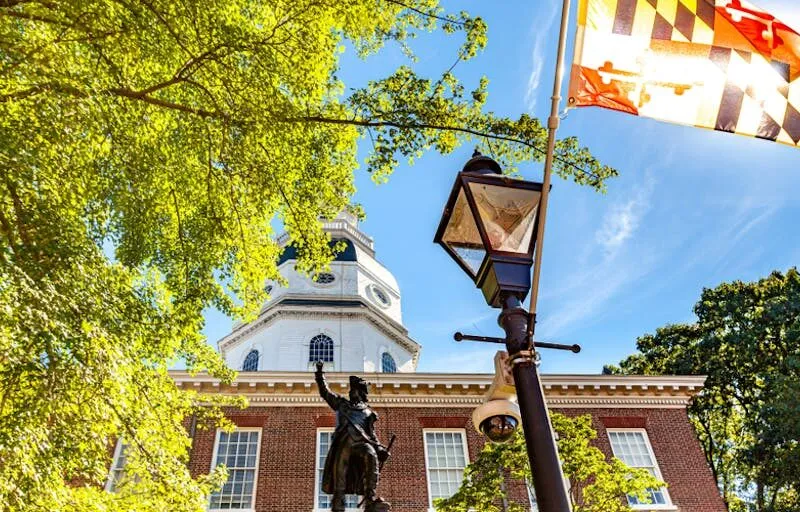Master’s programs at some college saw steep declines in international student enrollment.
Photo illustration by Justin Morrison/Inside Higher Ed | skynesher/E+/Getty Images
Federal actions to limit immigration have affected many international students’ decision to enroll at U.S. colleges and universities this fall, with several institutions reporting dramatic declines in international student enrollment.
New data from the Department of Homeland Security from the Student Exchange and Visitor Information System for October shows an overall 1 percent decline of all international students in the U.S. SEVIS data includes all students on F-1 and M-1 visas, including those enrolled in primary and secondary school, language training, flight school, and other vocational programs.
According to DHS data, bachelor’s degree enrollment among international students is down 1 percent from October 2024 to October 2025; master’s degree enrollment is down 2 percent, as well. Associate degree programs have 7 percent more international students in October 2025 than the year prior, and international doctoral students are up 2 percent.
Campus-level data paints a more dramatic picture; an Inside Higher Ed analysis of self-reported graduate international student enrollment numbers from nine colleges and universities finds an average year-over-year decline of 29 percent.
Some groups, including NAFSA, the association for international educators, have published predictions of how international student enrollment would impact colleges’ enrollment and financial health. NAFSA expected to see a 15 percent decline across the sector and greater drops for master’s degree programs.
“Master’s [programs] have been very hit. And in addition to master’s being hit, programs like computer sciences and STEM in particular have been mostly affected,” NAFSA CEO Fanta Aw said in a Sept. 19 interview with Inside Higher Ed.
At the University of Wisconsin at Madison, for example, master’s degree enrollment dropped 22 percent from fall 2024. Ph.D. program enrollment declined only 1 percent compared to the year prior, according to university data.
While more selective or elite institutions have mostly weathered enrollment declines among undergraduate international students—reporting little or no change to their enrollment numbers this fall—Aw says graduate student enrollment is down everywhere.
The University of Pennsylvania’s Wharton School of Business, for example, reported that international students made up 26 percent of its incoming master’s in business administration class, down five percentage points from the year prior, as reported by Poets and Quants (Poets and Quants is also owned by Times Higher Education, Inside Higher Ed’s parent company). At Duke’s Fuqua School of Business, 47 percent of the incoming class in 2024 hailed from other nations, but that figure dropped to 38 percent this fall.
Because master’s degrees are shorter programs than undergraduate ones, averaging two years, Aw anticipates universities to see even more dramatic declines from 2024 in fall 2026.
“The current environment is still too uncertain for [graduate] students to even consider potentially applying,” Aw said. “You cannot have enrollment if they’re not even applying.”
Of colleges in the data set, Northwest Missouri State University reported the greatest year-over-year decline in graduate student enrollment, falling from 557 international students in fall 2024 to 125 in fall 2025. In April, Northwest Missouri State reported that 43 of its international students had their SEVIS statuses revoked; 38 of them were on optional practical training.
At that time, Northwest Missouri State encouraged students who lost their SEVIS status to depart the U.S. immediately “to avoid accruing unlawful presence,” according to a memo from President Lance Tatum published by Fox 4 Kansas City. The university declined to comment for this piece.
Nationwide, international students make up 22 percent of all full-time graduate students, according to Integrated Postsecondary Education Data System data. International students often pay higher tuition rates compared to their domestic peers, and some colleges rely on international students to boost graduate program enrollment.
The dramatic changes in enrollment numbers are having budgetary impacts on some colleges.
At Georgetown University, foreign graduate student enrollment dropped 20 percent, which was expected but steeper than anticipated, according to a memo from interim university president Robert M. Groves. In April, Georgetown cut $100 million from its budget due to loss of federal research dollars and international student revenue, and Groves said more cuts may be needed in December.
DePaul University in Chicago saw a 63 percent year-over-year decline in new graduate students from other nations—a sharp drop that administrators, similarly, did not anticipate in this year’s budget.
As more colleges solidify their fall enrollment numbers, the sectorwide decline in foreign students has become more clear.
Inside Higher Ed’s initial data found colleges reported, on average, a 13 percent decrease in international student enrollment. The median year-over-year change was a 9 percent drop.
Small colleges saw significant changes. Bethany Lutheran College in Minnesota, with a total head count of 900 students, reported a 50 percent growth in international students. At the other end, the University of Hartford in Connecticut lost half of its international students, only expecting 50 instead of 100 this fall.
Community colleges are also feeling the loss of international students. Bellevue College in Washington State, a leading destination for international students in the two-year sector, reported a 56 percent year-over-year decline in enrollment.
Southeast Missouri State reported a 63 percent decline in international students, with 494 individuals unable to secure visas, according to a university statement.


